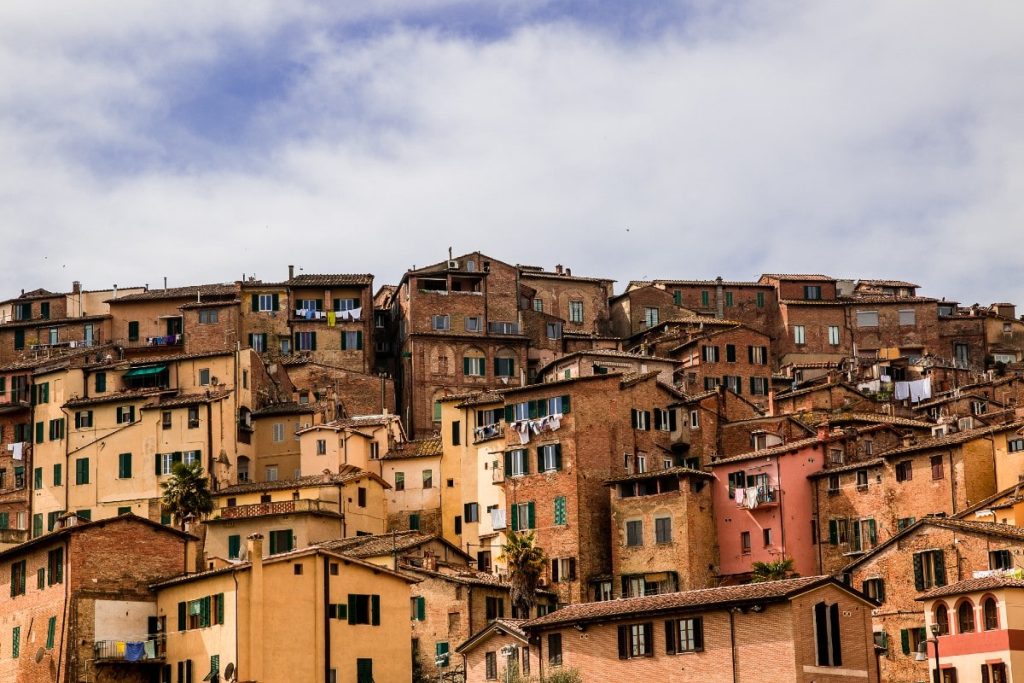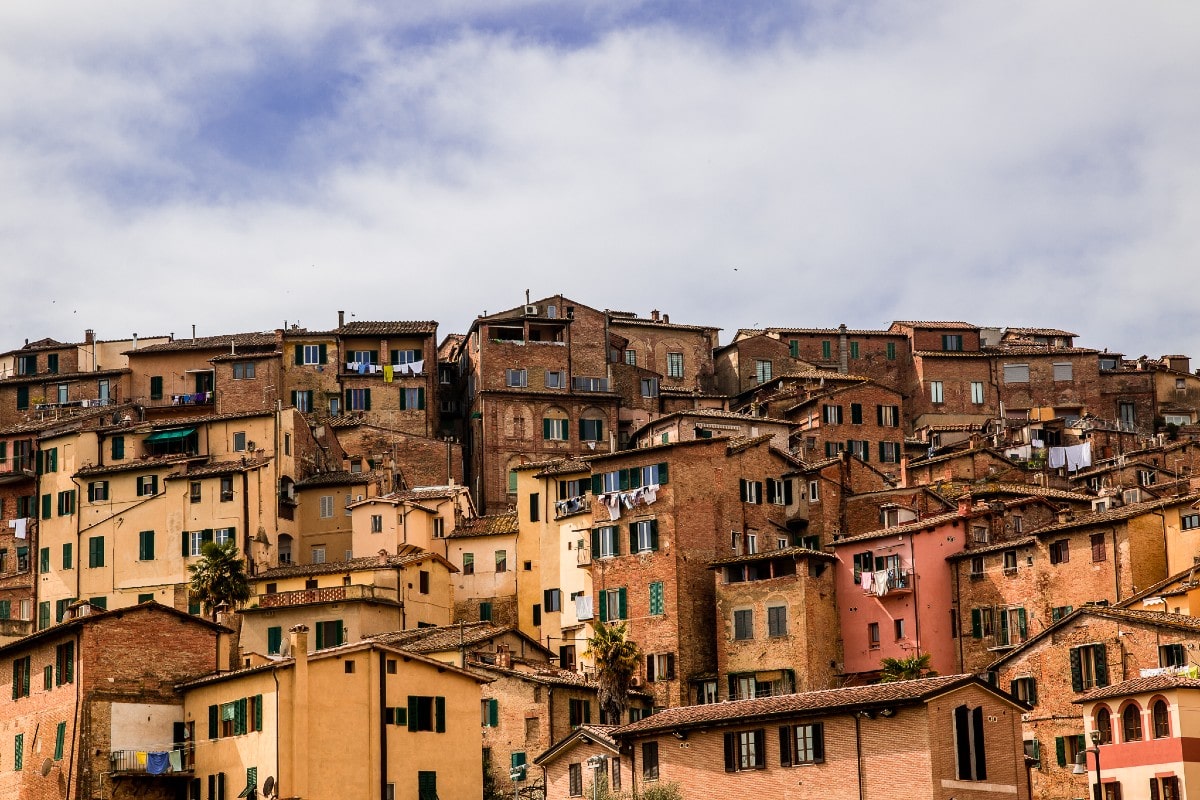The Contrade of Siena
In the heart of Tuscany lies the city of Siena, one of the most beautiful and characteristic medieval villages in Italy. A place that symbolises the union of history and culture, it still attracts and captivates millions of people every year, from enthusiasts of medieval culture to passing tourists. Its history has always been linked to the contrade and the oldest event in Siena, which has made it famous and renowned throughout the world: the Palio di Siena. But what are contrade?
Since antiquity, the city of Siena has been divided into three parts, called Terzi: the Terzo di Città, the Terzo di Camollia and the Terzo di San Martino. The ‘contrade’ (districts) of Siena are derived from this subdivision, in a tradition that is centuries old and full of curiosities. Let’s discover the history of Siena’s contrade and what makes them a cultural jewel worth visiting.
How many contrade are there in Siena?
For those who do not live in Siena, it is difficult to understand what the contrade represent: in most cases, there is a tendency to confuse them with the classic neighbourhoods into which a city is divided, which is not completely accurate. For the inhabitants of Siena, the contrade are not mere neighbourhoods, but rather enlarged communities, endowed with their own church and their own Contrada Society. The sense of belonging to this group is deeply rooted in the history of Sienese families. In fact, there are only two ways to be a part of it: by birth or by virtue of belonging to the family itself.
Despite a long historical tradition, the origin of the districts of Siena does not, unfortunately, have a precise date. There is, however, some evidence of their existence as far back as the mid-15th century. From a number of documents, one can see how important and historic they were for the people of Siena: as early as 1300, the city’s inhabitants used to gather at churches in different sections of the city to discuss topics of common interest.
This ancient tradition is still very much present in the lives of the citizens of Siena today. In fact, the city of Siena is divided into no less than 17 contrade, although this was not always the case. Over the course of history, this subdivision underwent important changes. During the 17th century, some of the contrade slowly became obsolete and, for this reason, they are remembered as the ‘suppressed contrade of Siena’. Gallo, Leone, Orso, Quercia, Spadaforte and Vipera are among the contrade that no longer exist today because of Violante Baviera’s proclamation of 1729. This sanctioned the new subdivision of the territorial borders that we still know today.
As well as subdividing the city, the contrade are a vital element for participation in the Palio di Siena, one of the oldest Italian traditions. Only 10 of the 17 contrade take part in this event each year, on 2 July and 16 August. Winning the race is a source of prestige and pride for the citizens of the winning contrada.

Contrade of Siena: the names and symbols
One of the most peculiar curiosities of Siena’s contrade is their names. Each is represented by the name of a characteristic animal, whether real or mythological. Let’s discover them together: Aquila (Eagle), Bruco (Caterpillar), Chiocciola (Snail), Civetta (Owl), Drago (Dragon), Giraffa (Giraffe), Istrice (Porcupine), Leocorno, Lupa (She-wolf), Nicchio (Seashell), Oca (Goose), Onda (Wave), Pantera (Panther), Selva (Forest), Tartuca, Torre (Tower), Valdimontone.
In addition to their names, these animals are also represented iconically in the various emblems of the districts. Each flag has different traditional colours: for example, the coat of arms of the Aquila contrada depicts the animal on a bright yellow background adorned with blue and black lines. Along with the animal, each of the 17 territorial units has a heraldic motto on its flag, which explains and reinforces its meaning. For example, the Onda contrada’s coat of arms reads ‘the colour of the sky and the strength of the sea’.
Many of the contrade have historical rivalries that date back to ancient times: they are mostly rooted in disagreements over territorial boundaries or conflicts that emerged as a result of particular events during the Palio. As well as rivalries, however, there are also alliances among many of the contrade. On various occasions, they exchange visits and special honours – for example, by displaying friendly flags in their own territory.
Tradition is inherent in Siena’s history and in every corner of the city. In fact, if you keep your eyes peeled as you visit Siena’s historical centre, you will notice the small, coloured coats of arms on the corners of many historical buildings. The presence of these coats of arms indicates which contrada you are in and what the boundary of its territory is.
What is the most populous contrada in Siena?
Unfortunately, there is no precise data regarding the number of inhabitants in each district. However, in 1300, the Terzo di Città area, with its 6 contrade (Aquila, Chiocciola, Onda, Pantera, Selva and Tartuca) was the most populous and richest area of the entire city. In fact, in this area we can still find some of Siena’s most important sights, such as the Duomo complex and the Pinacoteca Nazionale.
Visiting Siena gives you the chance to enjoy the countless elements of its centuries-old history. Even today, the contrade di Siena are a clear symbol of a past rich in history and traditions that is kept alive thanks to the strong commitment of the Sienese community. In addition to maintaining culture and historical memory, these communities play a fundamental role in civic life to improve the city of Siena, such as maintenance of their respective territories and shared green areas, and the organisation of social activities for the young and the elderly.
